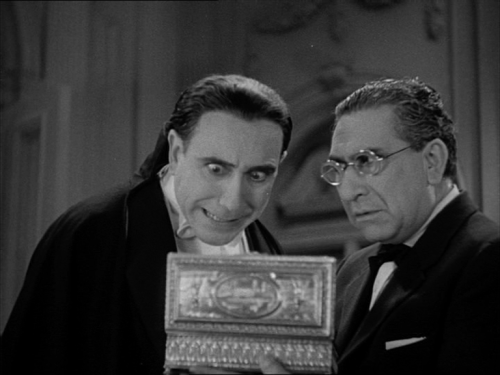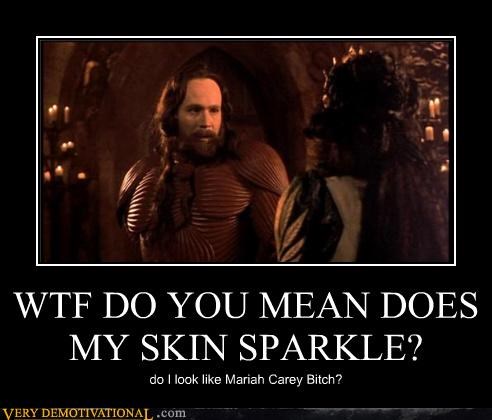Vampire Rules (Part II)

REPOST: It’s Halloween season so a few things are getting bumped for the next few days.
********************
In 1931 Universal Film Studios was faced with a fairly serious problem.
They had a decision to make and no matter what that decision was, they were going to lose money on it. They had to do it now, they couldn’t put it off any longer.
Al Jolson’s The Jazz Singer (1927) had completely rewritten the rule book. It was a rulebook that was only about 15 years old, but it was out the window now. The technical problems of synching audio and film had been beaten. Talkies were here, and they were here to stay.
Some of the biggest stars in Hollywood’s Silent Era saw their careers end overnight because they had an unengaging voice. But that wasn’t the problem the studios were facing. There has always been some wide-eyed innocent anxious to be exploited by the film industry.
The trouble was in distribution. American film studios had zero worries in selling films to foreign markets during the Silent Era. You just snipped out the dialog card that was in English and pasted in another card in whatever language market you were selling your film in. Easy.
But for a number of technical reasons, the early Vitaphone recording process was basically impossible to edit after filming. There was no “fixing it in post.” For a while, the soundman was more important on set than the director. If he said, “The take is bad,” you reshot the scene no questions asked. The dialog you recorded in the studio was it, nothing more could be added later. It’s why films from that period have such distinct echoes in the dialog. Dubbing in another language was simply impossible in 1931.
Which meant that the foreign film market died overnight. A few people like Charlie Chaplin could get away with working Silent but the audiences had gotten spoiled fast. They wouldn’t attend silent action or drama films. That market reality was now set in stone. A number of lucrative foreign language markets would have to be written off. But maybe not all of them.
The second-largest market on the North American continent was Spanish. The decision was taken to simultaneously shoot a Spanish-language version of the exact same film using the exact same sets at the same time. Although with different actors, naturally. It makes for very interesting comparison and contrasts with Dracula (1931).
The Spanish language crew would shoot their scenes after the English crew had shot theirs, so they were able to judge composition, lighting, camera angle, etc., and make some adjustments. In my opinion, the Spanish language version makes a stronger impression. “Mexican Dracula” clearly had the better leading lady. Mina Harker was played by Hellen Chandler in the English version and comes across as stiff and a bit wooden. Eva (Mina) was played by Lupita Tovar in the Spanish version and she delivered a much more engaging performance. Carefree and vivacious in the early scenes. Haunted and frightened during the second act. And in the final act becoming the first Vampire seductress in film history, clearly relishing her unquenchable desire for blood. (click the link you need to see her)
The only place the Spanish version really falls down is Dracula himself. Carlos Villarias was instructed to watch Lugosi’s Dracula and base his performance on that of an actor who had been playing the part on stage for years. Naturally, it looked like a weak caricature of Lagossi’s performance.
Regardless, these two versions of the same story finally firmed up the rules for Vampirism:
a. A cross will repel a Vampire.
b. A Vampire cannot cross running water.
c. A Vampire cannot be seen in a mirror or be photographed. Nor do they cast shadows.
d. A Vampire will be destroyed by sunlight.
e. Vampires can polymorph into bats and wolves.
f. Vampires have some kind of mind control power.
g. Vampires can’t enter someone’s house without the invite.
Various writers and filmmakers started playing with these rules almost as soon as they were established. In Dracula’s Daughter (1936), the Vampiress is killed with an arrow, thus fulfilling the wood requirement. In Horror of Dracula (1958), Van Helsing defeats Dracula by crossing two candlesticks together and driving him into the sunlight with his field-expedient cross. And Van Helsing cures himself of Vampirism by use of a branding iron and Holy Water in The Brides of Dracula (1960) which prominently featured, no Dracula.
Filmmakers and storytellers in general weren’t breaking the rules of Vampirism. Not at first. Just seeing how far they could bend them. The Vampire was viewed as an unholy creation in those days. A minion of Hell brought into being by some major arch-duke of the infernal reaches. Thus, quite vulnerable to Christian totems or iconography. No other religion’s holy images had power over them. And that trope held out for quite a while.
In Love at First Bite (1979), Doctor Jeff Rosenberg confronts Dracula with a Star of David at a dinner party, to which Vlad responds, “You should forget about Cindy and find a nice Jewish girl.” Audiences laughed because everyone knew that only crosses worked on Vampires. This was accepted lore by the general public.
Then in the early Eighties, things started to change in the movies.
Novelists had been experimenting with Vampire rules for some time but that hadn’t translated to the screen. In The Hunger (1983), there was definitely a new set of rules. In fact, the rules were so different, that the characters played by Catherine Deneuve and David Bowie only resembled Stoker’s Vampires in that they had to subsist on blood. Deneuve was immortal and indestructible with none of the weaknesses that Vampires were supposed to have.
In Life Force, the Vampires… Look, I only included this one because the title of the book it was based on was called the Space Vampires and it shows up on all the Eighties Vampire movie lists. Life Force is not a vampire movie. It’s just NOT.
However, a lot of the films from the Eighties did follow the established rules of the genre. Mostly these were comedies, which isn’t a surprise, horror comedies were quite the thing in that decade. However, the more serious films from that period were clearly beginning to become uncomfortable with the idea of only Christian totems and iconography having the power to repel a Vampire. Even in Fright Night, the dread Vampire… Jerry… sneers to a cross-wielding Peter Vincent, “you have to have faith for that to work on me.” But the film couldn’t bring itself to ask, faith in what? You get the odd feeling watching those scenes that Peter Vincent was having trouble because he didn’t have a belief in magic rather than the Christian faith.
Any kind of faith being a shield began to become a more common Vampire trope. Replacing the power of Christ to repel these princes of the undead. I remember thinking it looked silly as hell to have a Russian soldier drive back a Vampire by holding up Hammer and Sickle sigil in a Doctor Who episode but that was more and more the norm by the end of the Eighties.
As the film industry became more and more comfortable with its anti-Christian prejudices the ability of a cross to ward off a Vampire began to feel archaic to late-20th-century filmmakers. Christianity as a light against the Darkness was taken out of the picture by the end of the 1990s. And Vampires began to be portrayed as Byronic heroes, like Marie in Innocent Blood.
Or for that matter, Dracula himself in Francis Ford Coppola’s Bram Stoker’s Dracula. Stoker was very clear about Dracula being a bad guy, whereas Coppola reinterpreted the author’s work to make Dracula a much more sympathetic figure.
Although there was one big throwback to the old school Vampires with From Dusk Til Dawn. Seth Gecko: And if there is a Hell, and those sons of bitches are from it, then there has got to be a Heaven… Jacob, there’s gotta be.*
Interview with the Vampire set the new standard. Vampires were now completely indifferent to Christianly. I haven’t read the book in decades, but I remember Louis saying something to the effect of, he liked crucifixes.
Various writers had been experimenting with Vampirism as a disease for some time, so this started slipping into the films of the 1990s as well. And the sex with Vampires was becoming quite a bit more explicit. Vamps weren’t just penetrating with their fangs anymore.
“I had a good view of what happened. Bianca’s tongue flashed out, long and pink and sticky, smearing Rachel’s wrist with shining saliva. Rachel shuddered at the touch, her breath coming quicker. Her nipples stiffened beneath the thin fabric of the blouse, and she let her head fall slowly backwards. Her eyes were glazed over with a narcotic languor, like those of a junkie who had just shot up.
Bianca’s fangs extended and slashed open Rachel’s pale, pretty skin. Blood welled. Bianca’s tongue began to flash in and out, faster than could really be seen, lapping the blood up as quickly as it appeared. Her dark eyes were narrowed, distant. Rachel was gasping and moaning in pleasure, her entire body shivering.”** -Storm Front by Jim Butcher
Vampire romance became a more frequent motif in the 2000s. And by that, I mean, the standard romance plot of two alpha males pursuing the same mortal woman.
It was also during this period that film and TV began exploring Vampire societies. The lone leech was a thing of the past. They existed in communities now and none of them appeared to be that worried about Vampire hunters anymore. What could those mortals do really? Wave those silly crosses at them?
The aforementioned Vampire Rules a. b. and c. had been repealed years before. Rule (d) was still very much in effect, all Vampires will be destroyed by sunlight. And then in 2008, this rule too was repealed in the stupidest way possible.

I didn’t think vampires could go any lower and then I saw Netflix Dracula.
End of Part II
Next Vampire Rules Part III: Netflix Dracula.
*I felt bad when Sex Machine got turned.
**I told you the Dresden Files was originally inspired by the Anita Blake books. YOU KNOW WHO YOU ARE.

